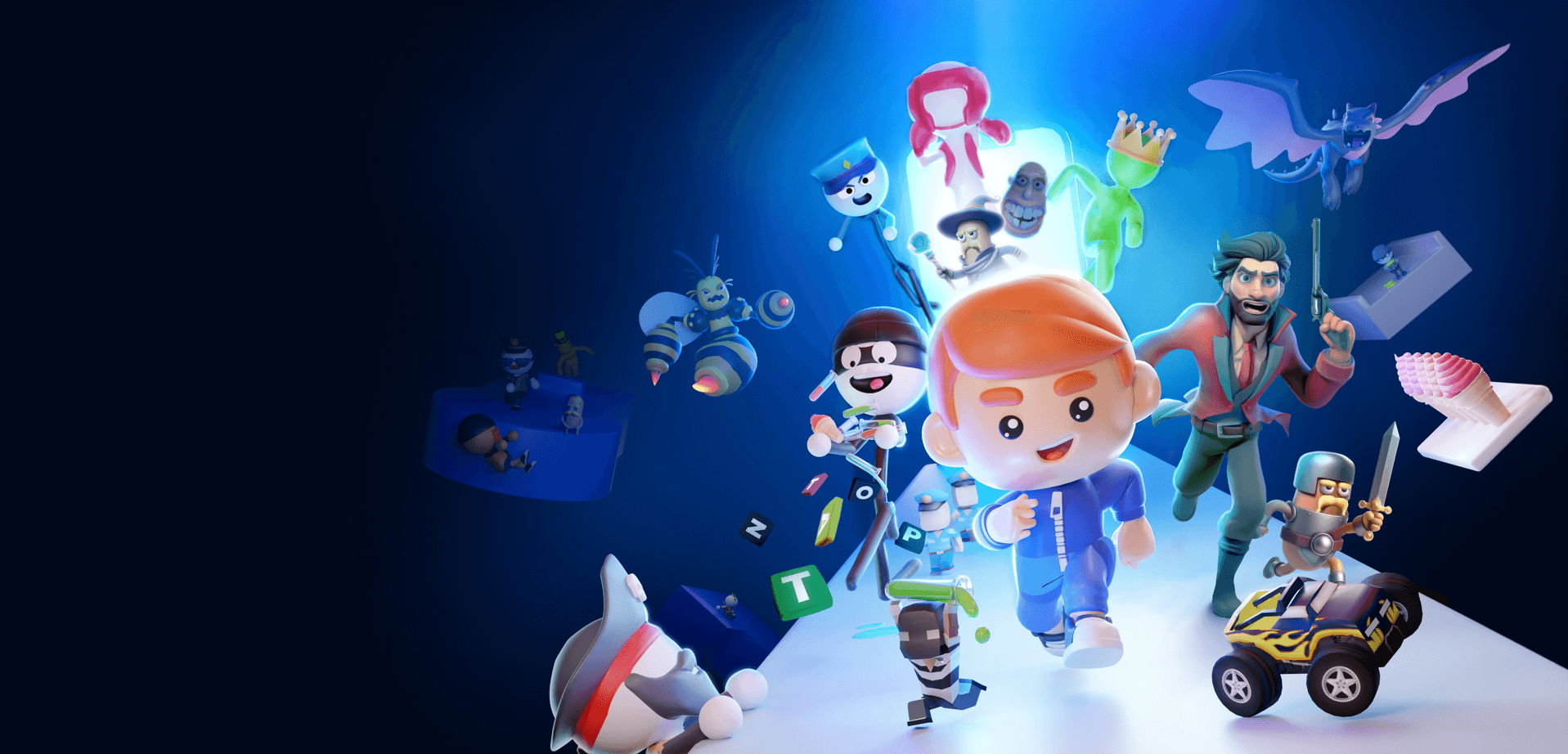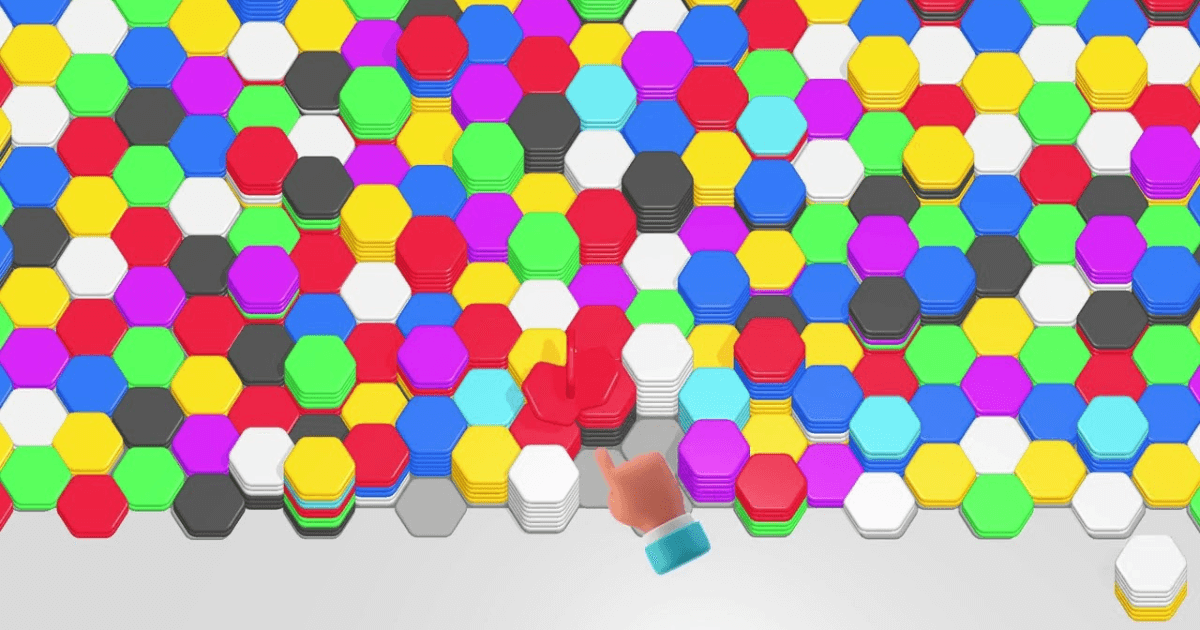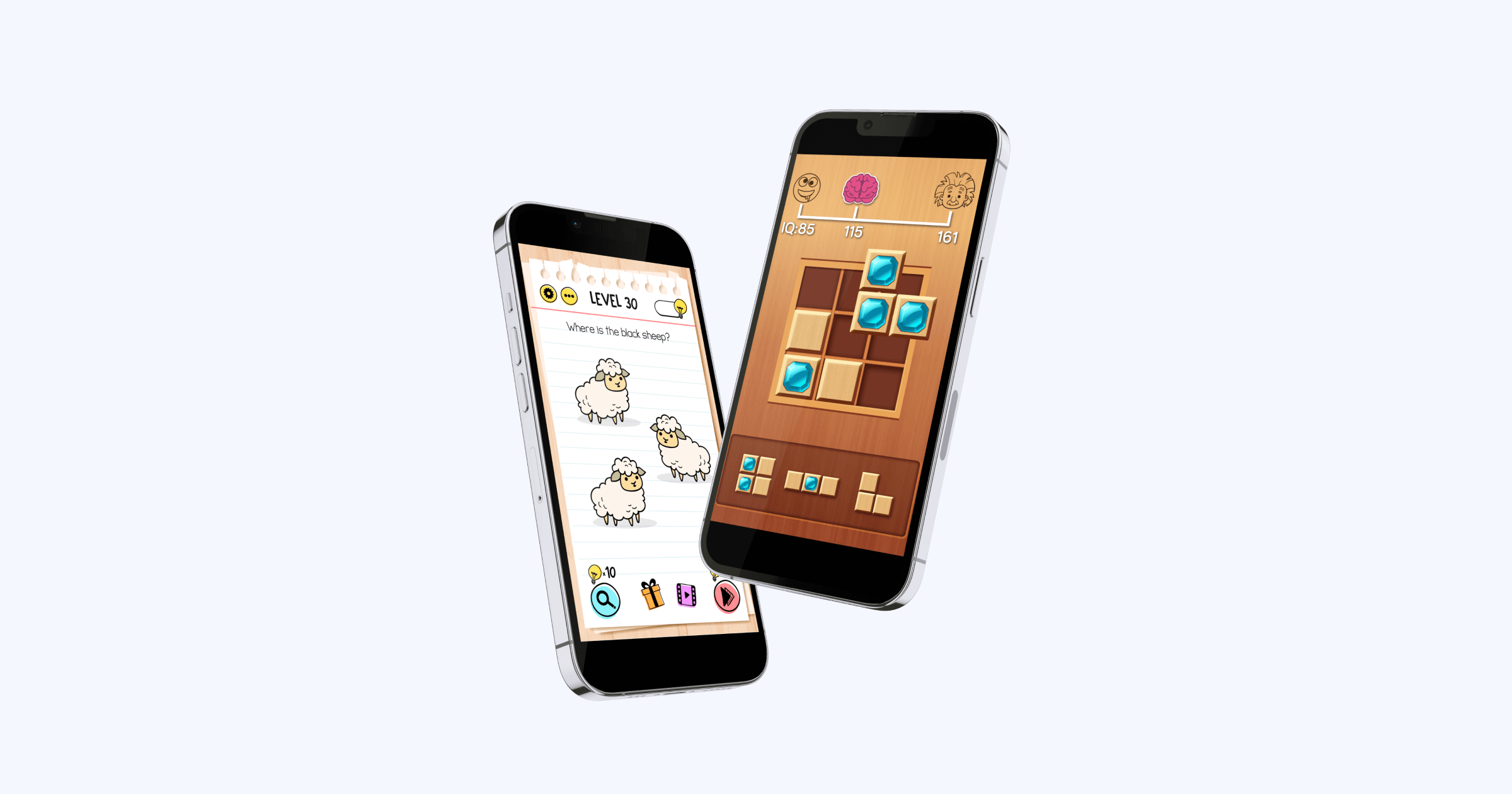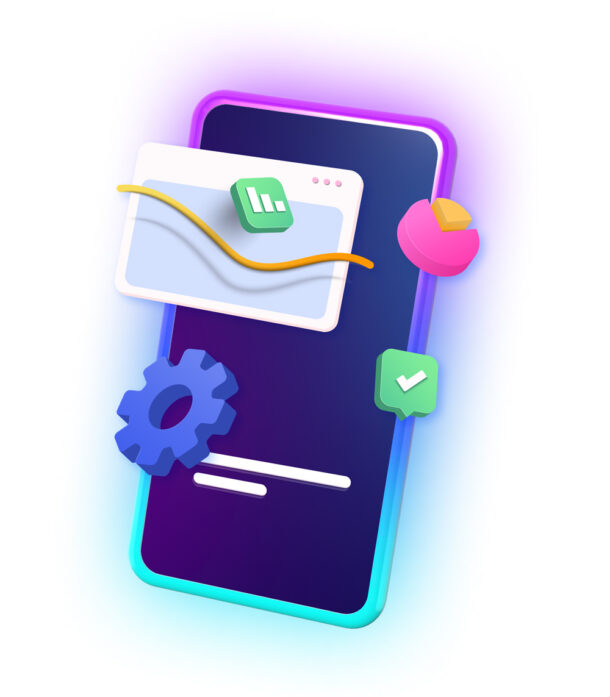You’re still not using AI in game development?
You might want to reconsider.
Ever since AI’s popularity skyrocketed, mobile game developers have been testing different AI tools for different purposes. Over time, they’ve established what it works best for and incorporated these practices into their day-to-day routine.
In this article, we’re bringing you a list of eight tried-and-true ways to use AI in game development.
1. Ideation
Coming up with unique mobile game ideas can be a daunting task.
Because of this, many developers turn to AI during the ideation phase.
It usually starts with a simple prompt like “Give me 20 mobile game ideas inspired by currently popular games”. While this will probably not give you the ideal answer, it can be a good starting point for further idea development.
Once you come up with a rough idea, you can use AI to help you enhance it and come up with a list of related ideas.
Best of all?
You can do this as many times as you want, becoming more detailed and critical with each prompt. Eventually, AI can help you come up with a fresh and exciting idea.
2. Gameplay Mechanics
Need suggestions for gameplay mechanics that fit your game’s theme? Or need help enhancing the mechanics you have already chosen?
AI can help out with both.
A popular use of AI in game development is for analyzing the top charts and identifying the most popular mechanics. If you have a theme in mind, you can ask AI to narrow down the potential mechanic choices, only suggesting those that worked for similar games in the past.
If you already know which mechanic you want to use, AI can also help you get the most out of it. For example, by suggesting the best-fitting monetization methods, engagement, and retention features.
3. Storytelling
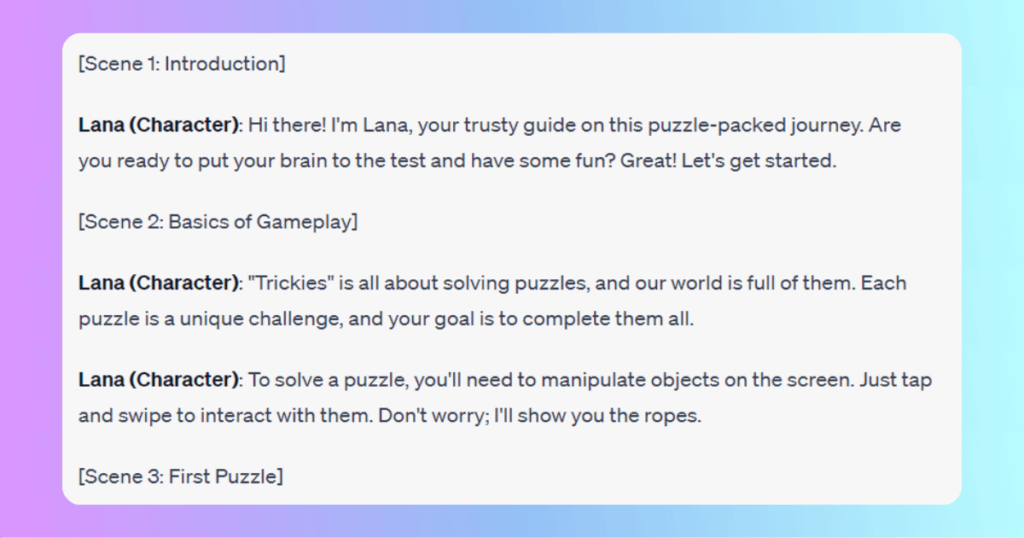
Narrative meta layers have been a mobile gaming trend for years.
And with the rise of AI in game development – they became even more popular.
AI has become an absolute game-changer in the realm of narrative storytelling. What previously took a team of game writers and a large amount of time, can now be delivered in a matter of seconds.
Using AI language models, you can easily craft engaging narratives that captivate players and keep them coming back to the game. This includes:
- Backstories
- Dialogues
- Conversational choices
On a more advanced level, AI can even create narratives that dynamically adapt to player behavior. For example, after players make a few conversational choices, dynamic AI models can generate unique responses. This should create a sense of realism, delivering a unique and memorable experience for each player.
4. Asset/Character Design
Whether they admit it or not, many game artists pay regular visits to AI tools.
In most cases, as a source of inspiration.
AI can be of great help in designing all kinds of in-game assets, including characters. Simply provide a detailed description of your vision or upload a reference image, and let the AI work its magic.
For example, we tried prompting for a “cartoonish girl character for a casual game with a gardening meta” and uploaded a reference picture of our colleague. See the results for yourself.
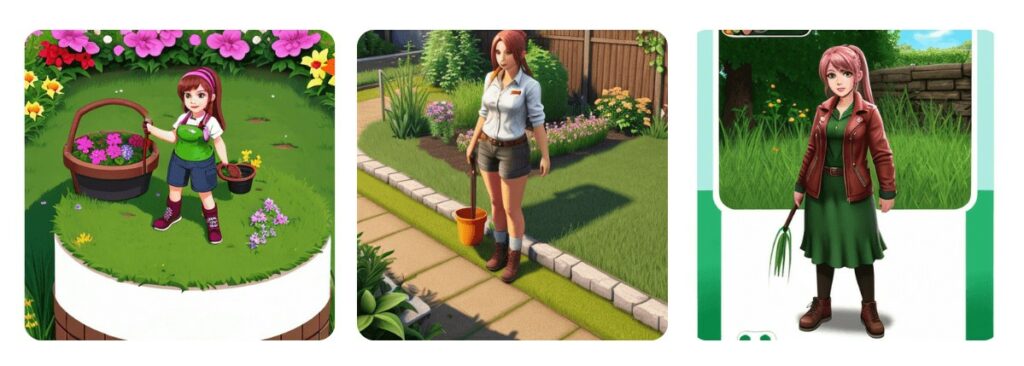
The most important thing here is to master the art of prompting. When writing the prompt, it’s important to be as precise as possible, highlighting the desired elements, pose, and image style (e.g. anime, cartoonish, realistic).
Are these designs perfect?
Of course not. No matter how good it gets, AI art usually requires some human touch. In the post-production phase, game artists usually recreate the AI-generated image, fixing its flaws, adjusting the style, and including some additional elements.
5. ASO Optimization
Most game developers know all about the importance of app store optimization (ASO). But, only some have dedicated ASO teams and access to pricey tools.
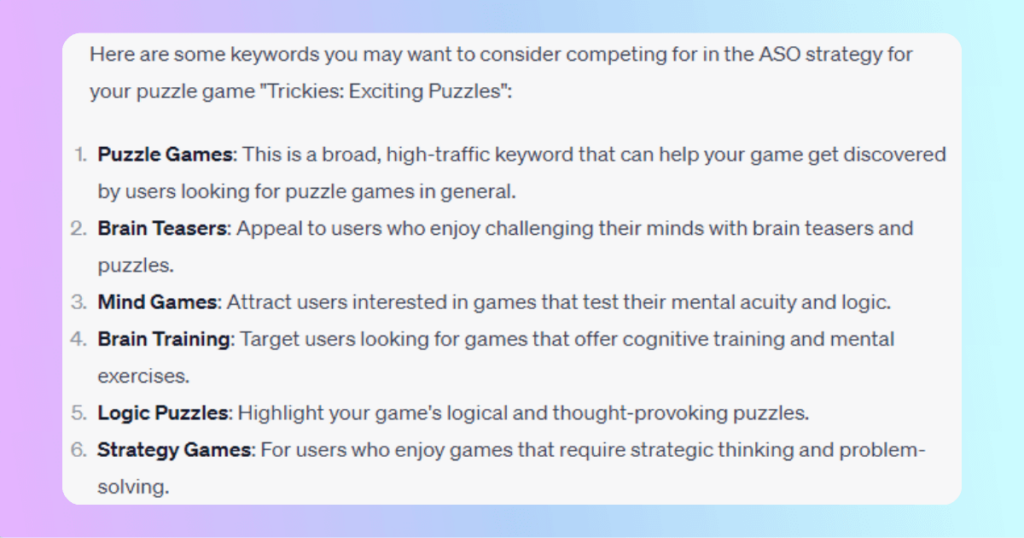
Luckily, AI can help in many aspects of app store optimization, including:
- Keyword optimization. AI can generate a list of the most relevant keywords for your game and recommend the optimal keyword frequency.
- App title and description optimization. It can suggest titles and app descriptions that highlight your game’s main features.
- Icon and screenshot variants. You can upload your game’s images, and AI can create various versions with new elements to test out.
6. Testing Process
Traditionally, testing a game means becoming a player, diving in, and experiencing it firsthand.
The problem?
This can be incredibly time-consuming.
With the help of AI algorithms, developers can make game testing faster and more precise. AI testing systems can act like players, trying many different things in the game to find problems much quicker than humans. Machine learning can also identify patterns and anomalies from gameplay data, leading to better game performance.
Note that this doesn’t eliminate the need for a manual check. You should still have someone play and test your games, but AI in game development can be of great help in the process.
7. Level Optimization
Ever left a game because of a frustratingly difficult level?
We know we have.
AI tools can help developers avoid this scenario by suggesting level designs based on best practices. This means they should deliver scenarios for levels that smoothly ramp up in difficulty, ensuring players enjoy a satisfying and engaging gaming experience.
More sophisticated tools can even pace levels in real-time.
Based on dynamic difficulty adjustment, these tools analyze player interactions and performance and deliver a tailored gaming experience for each player.
8. Game Icons
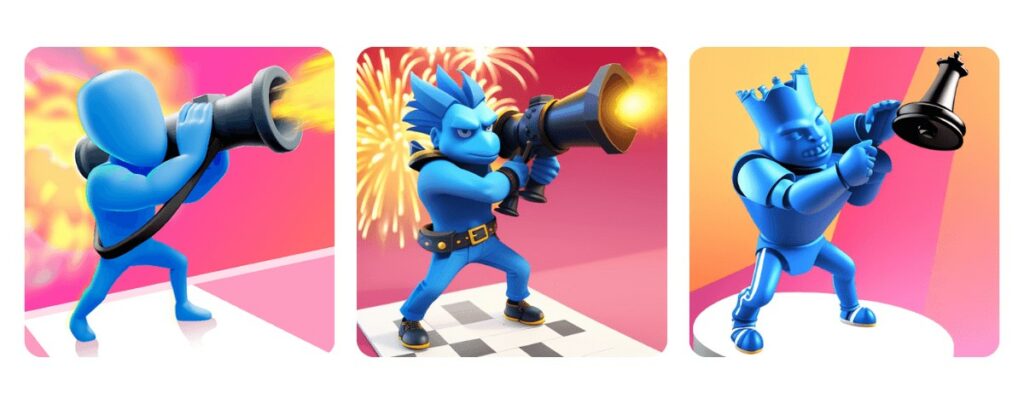
We’ve already mentioned that AI can be helpful in icon design.
But, since this practice is widely used, it deserves a separate mention.
Game icons help games stand out from the competition and make a great first impression on potential players. For this reason, developers often update and test different icons in an attempt to boost conversion rates.
AI can help by giving new ideas for your icon to show what’s cool about your game.
If you already have a well-performing icon, you might want to stick to a similar concept. To do so, you can upload the original icon as a reference and ask AI to make small tweaks. For example, changing the character’s pose or background color.
But, keep in mind that AI-generated icons also require some designer magic before they reach the end user.
AI in Game Development: Popular Tools
After going through this article, you might be wondering about the AI tools commonly used in game development. Here’s a list of popular choices and the purposes they work best for:
- Scenario (game assets)
- Ludo.ai (ideation, gameplay adaptation)
- Charisma (storytelling)
- Stability.ai (game assets)
- Modl.ai (game testing)
Please note that these are our top picks based on our experience and developer feedback. New and exciting AI tools are emerging by the day, so feel free to do your research and choose your favorites.
Final Thoughts on AI in Game Development
We’re confident that the influence of AI in game development will only grow and evolve, and we’ll be keeping a close eye on it.
Make sure you stay in the loop – subscribe to our newsletter!

